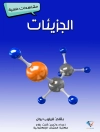This book details polysaccharides and other important biomacromolecules covering their source, production, structures, properties, and current and potential application in the fields of biotechnology and medicine. It includes a systematic discussion on the general strategies of isolation, separation and characterization of polysaccharides and proteins. Subsequent chapters are devoted to polysaccharides obtained from various sources, including botanical, algal, animal and microbial.
In the area of botanical polysaccharides, separate chapters are devoted to the sources, structure, properties and medical applications of cellulose and its derivatives, starch and its derivatives, pectins, and exudate gums, notably gum arabic. Another chapter discusses the potential of hemicelluloses (xylans and xylan derivatives) as a new source of functional biopolymers for biomedical and industrial applications. The algal polysaccharide, alginate, has significant application in food, pharmaceuticals and the medical field, all of which are reviewed in a separate chapter. Polysaccharides of animal origin are included with separate chapters on the sources, production, biocompatibility, biodegradability and biomedical applications of chitin (chitosan) and hyaluronan. With the increasing knowledge and applications of genetic engineering there is also an introduction in the book to nucleic acid polymers, the genome research and genetic engineering.
Proteins and protein conjugates are covered, with one chapter providing a general review of structural glycoproteins, fibronectin and laminin, together with their role in the promotion of cell adhesion in vascular grafts, implants and tissue engineering. Another chapter discusses general aspects of a number of industrial proteins, including casein, caseinates, whey protein, gluten and soy proteins, with emphasis on their medical applications, and with reference to the potential of bacterial proteins. Another natural polymer resource, microbial polyesters, although small compared with polysaccharides and proteins, is also gaining increasing interest in biomedical technology and other industrial sectors. One chapter, therefore, is devoted to microbial polyesters, with comprehensive coverage of their biosynthesis, properties, enzymic degradation and applications.
By dealing with biopolymers at the molecular level, the book is aimed at the biomedical and wider materials science communities and provides an advanced overview of biopolymers at the graduate and postgraduate level. In addition it will appeal to both academic and industrial life scientists who are involved in research and development activities in the medical and biotechnology field.
สารบัญ
Natural Polymers: Introduction and Overview;
Analysis and Characterization of Natural Polymers;
Cellulose and its Derivatives and Applications;
Starch and Starch Derived Products: Biotech and Medical Applications;
Pectins: Production, Properties and Applications;
Gum Arabic and Other Exudate Gums: Sources, Properties and Applications;
Alginates: Biotechnology and Medical Applications;
Chitin and Chitosan: Sources, Production and Medical Applications;Hemicellulose: A New Source of Functional Biopolymers;
Hyaluronan: Resources, Biology and Medical Applications;
Nucleic Acid Polymers, Genes and Applications of Recombinant DNA Technology;
Glycoproteins and Adhesion Ligands: Properties and Biomedical Applications;
Industrial Milk and Plant Proteins: Sources, Production and Medical Applications;
Microbial Polyesters: Biosynthesis, Properties, Biodegradation and Applications;
เกี่ยวกับผู้แต่ง
Peter A Williams is Professor of Polymer and Colloid Chemistry and Director of the Centre for Water Soluble Polymers at the North East Wales Institute. Has published over 170 scientific papers and edited over 30 books. He is Editor-in-Chief of the international journal Food Hydrocolloids. His research is in the area of physicochemical characterisation, solution properties and interfacial behaviour of both natural and synthetic polymers. Recent work has been involved with the determination of molecular mass distribution using flow field flow fractionation coupled to light scattering, rheological behaviour of polymer solutions and gels, associative and segregative interaction of polysaccharides, development of polysaccharide-protein complexes as novel emulsifiers.












